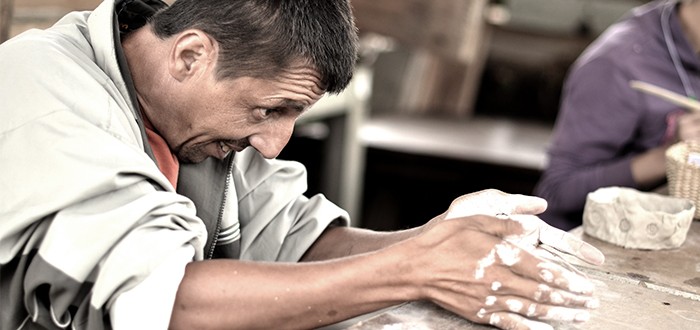You’re a former school teacher who now has mesothelioma. Chances are you developed the cancer because of asbestos exposure that occurred in the classroom.
Typically, classroom exposure to asbestos occurs because the materials used in building the school contained the toxic mineral.
How then does one explain the case of the teacher who worked in a school not built with materials containing asbestos but who developed mesothelioma anyway?
That’s the very question doctors and health researchers in Italy puzzled over a short time ago. The answer turned out to be modeling clay. Or, to be more accurate, it was modeling clay paste.
Everything in this teacher’s schoolroom was asbestos-free except for the clay paste she and her students used for various arts-and-crafts projects.
The investigators reached three conclusions after figuring out that clay paste was the culprit.
One, doctors should never put a newly diagnosed mesothelioma patient’s asbestos exposure down to an unknown source without first fully understanding the patient’s employment history.
Two, doctors should suspect modeling clay as at least one possible source of asbestos exposure if it is learned that the mesothelioma patient ever worked with that material.
Three, doctors should keep in mind that even a tiny exposure to asbestos can trigger mesothelioma. The amount of asbestos exposure from modeling clay can certainly be small.
Teacher’s Mesothelioma Exposure Mystery Solved
The researchers were from Italy’s Agency for Health Protection. They wrote about the school teacher in the March 24, 2016, edition of the journal La Medicina del Lavoro.
They noted that there were just 11 school teachers with mesothelioma among the 12,000 or so other people listed in their country’s fourth National Mesothelioma Register.
Those teachers were found to have developed mesothelioma as a result of exposure to asbestos-containing construction materials used in building the schools where they worked, the researchers said.
However, another registry — the Brescia Provincial Mesothelioma Register — identified four school teachers whose asbestos exposure could not be attributed to building materials. In fact, their exposure could not be attributed to anything since the source was a mystery.
The researchers located one of those four teachers and went to visit her. She was at that time in her late 70s. Her mesothelioma was far advanced.
Before she died, the researchers were able to question her at length about her job. They were eventually able to figure out that the source of her asbestos exposure was the modeling clay paste.
The clay paste was made by a company called DAS and was sold in powder form. Teachers prepared it for use by mixing it with water.
In prepared form, the clay paste could be used to create terracotta artworks. Or it could be used as a finish for paper mache items.
Exposure to DAS Modeling Clay Paste Caused Mesothelioma
The researchers looked around the teacher’s former school and found an unused pack of DAS paste powder purchased in the 1960s or 1970s.
They then analyzed particles of the powder under a scanning electron microscope. That examination revealed the presence of asbestos fibers.
Later, after the teacher died, a necropsy was performed on her lungs. It was learned that they contained the same type of asbestos fibers as was found in the clay paste powder.
The researchers felt the evidence was clear that the teacher was exposed to asbestos from her years of handling this clay paste.
They noted that their finding was posthumously helpful to the teacher. It led to her case being medically reclassified from “unknown” to “sure” with regard to her asbestos exposure occurring at the school.
That in turn led the Italian Workers’ Compensation Authority to acknowledge that the teacher’s mesothelioma was job-related and thus eligible for a government payout.

